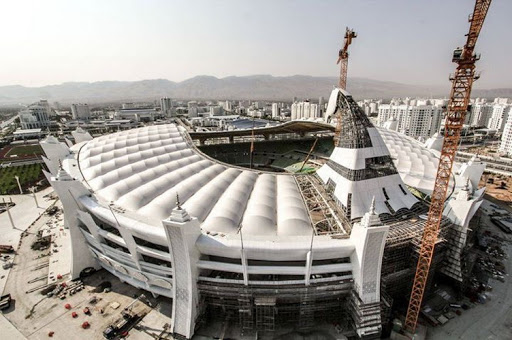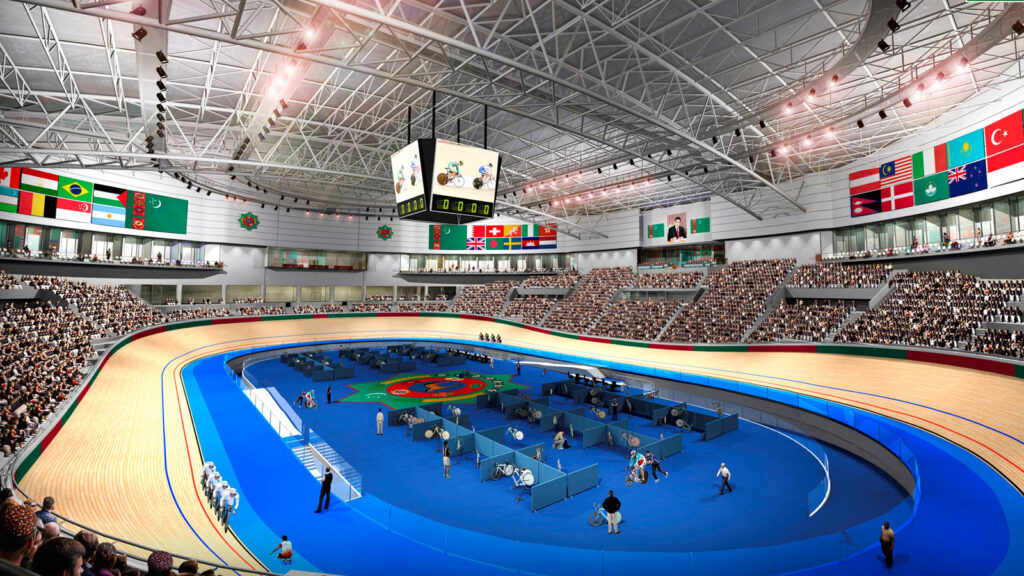Ashgabat Olympic Village, Turkmenistan
Architects: Arup Associates Istanbul
Client: Polimeks
Services: Concept Design and Scheme Design
Location: Ashgabat, Turkmenistan
The Olympic Village in Ashgabat is the sport complex created to host the 2017 Asian Indoor and Martial Arts Games, the Turkmenistan's most prestigious sporting event. This complex has more than 30 buildings with a total of 750.000 m² and a total surface of 1.466.400 m². The Olympic Village can be easily accessed from all corners of the city due to its location at the intersection of four main major roads, and it consists of a 5,000-seat water sports facility, a 4,000-seat tennis court, a 5,000-seat indoor athletics facility, a 450-seat VIP hotel, athletes' residences, cultural centres, a 6,000-seat indoor velodrome, a 15,000-seat team sports arena, a 5,000-seat individual sports arena, outdoor sports areas, a media centre, an 800-bed hotel, a business centre and indoor and outdoor parking. The complex has been built in different phases, phase 1, phase 2 and phase 3. The Olympic Stadium was part of phase 3 and designed to replace the existing stadium, which was completely demolished and redesigned according to FIFA and IAAF standards. The stadium has a capacity of 45,000 spectators for IAAF competitions (only 40,000 spectators can be considered for FIFA competitions) on an enclosed area of 100.000m2 which includes training rooms and related facilities and the stadium seating. In this large complex of sports buildings, the acoustic design aimed to control noise generated by the entire complex to the acoustic sensitive receptors located in the neighbouring areas as well as controlling the existing environmental noise that can generate disturbance within the most sensitive spaces of the complex. The acoustic design also consisted in predicting the reverberation time within the various spaces to ensure the achievement of the speech intelligibility targets for public announcements and evacuation (PA/VA), as required by FIFA and IAAF standards. Finally, the control of noise from mechanical and electrical units was carried out in order to obtain a suitable background noise level within all spaces, according to the international standards mentioned above.




